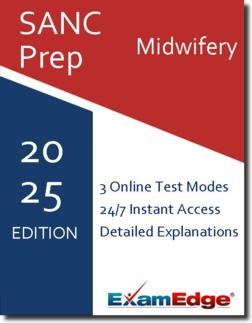SANC Midwifery (SANC- Midwifery) Practice Tests & Test Prep by Exam Edge - Topics
Based on 22 Reviews
- Real Exam Simulation: Timed questions and matching content build comfort for your SANC Midwifery test day.
- Instant, 24/7 Access: Web-based SANC Midwifery practice exams with no software needed.
- Clear Explanations: Step-by-step answers and explanations for your SANC exam to strengthen understanding.
- Boosted Confidence: Reduces anxiety and improves test-taking skills to ace your SANC Midwifery (SANC- Midwifery).

Understanding the exact breakdown of the SANC Midwifery test will help you know what to expect and how to most effectively prepare. The SANC Midwifery has multiple-choice questions The exam will be broken down into the sections below:
| SANC Midwifery Exam Blueprint | ||
|---|---|---|
| Domain Name | ||
| Physical Assessment and Diagnostic Evaluation | ||
| Primary Care | ||
| Gynecology | ||
| Obstetrics | ||
| Pharmacology | ||
| Professional Issues |


